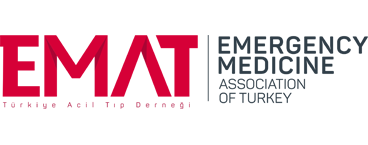Evaluation of Risk Factors and Clinical Characteristics of Elderly Patients with Acute Upper Gastrointestinal Hemorrhage
Mustafa Burak Sayhan1, Serhat Oğuz2, Hasan Ümit3, Esin Secgin Sayhan4, Mustafa Onur Eralp1, Gökhan Akdur1, Cemil Kavalcı5, Tamer Sagiroglu2
1Trakya Universty Medical School Department Of Emergency Medicine.
2Trakya Universty Medical School Department Of General Surgery.
3Trakya Universty Medical School Department Of İnternal Medicine.
4Trakya Universty Medical School Department Of Public Healty
5Ankara Numune Training An Researh Hospital Department Of Emergency Medicine
Keywords: Elderly Patients, Gastrointestinal Hemorrhage, Emergency Department
Abstract
Aim: Acute upper gastrointestinal hemorrhage (AUGIH) is a life-threatening emergency problem in the elderly population. In this study, we aimed to determine the sociodemographic characteristics, clinical features and the risk factors of the elderly patients presenting to the Emergency Department (ED) with AUGIH.
Material and Method: A cross-sectional study was conducted in a university-based hospital. One hundred and ninety-four patients were divided into two groups: Group A (n=128); elderly group (65-79 years) and Group B (n=66); very elderly group (> 79 years).
Results: The mean age was 76.34±7.91 years. The most frequent presenting symptom was melena (87.1%). Fourteen patients (7.2%) were in shock at the time of bleeding. One hundred and thirty-three patients (68.5%) had a history of rebleeding. Underlying comorbidities were detected in 171 patients (88.1%). There was a significant difference in terms of alcohol abuse and coroner artery disease between the two groups (p=0.038 and p=0.049 respectively). The most frequent endoscopic lesions were peptic ulcer and gastro duodenal erosions in both groups. Conservative medical treatments were applied in most of the patients in two groups but there were no statistically significant differences in terms of response to conservative medical treatment between two groups (p=0.892). The overall mortality rate was 11.7% in group A and 19.7% in group B. There were no statistically significant differences in mortality between two groups (p=0.134).
Conclusion: Evaluation of risk factors and clinical characteristics of elderly patients with upper gastrointestinal hemorrhage are very significant. Comorbid diseases and multiple drug use are commonly observed in the elderly patients.

